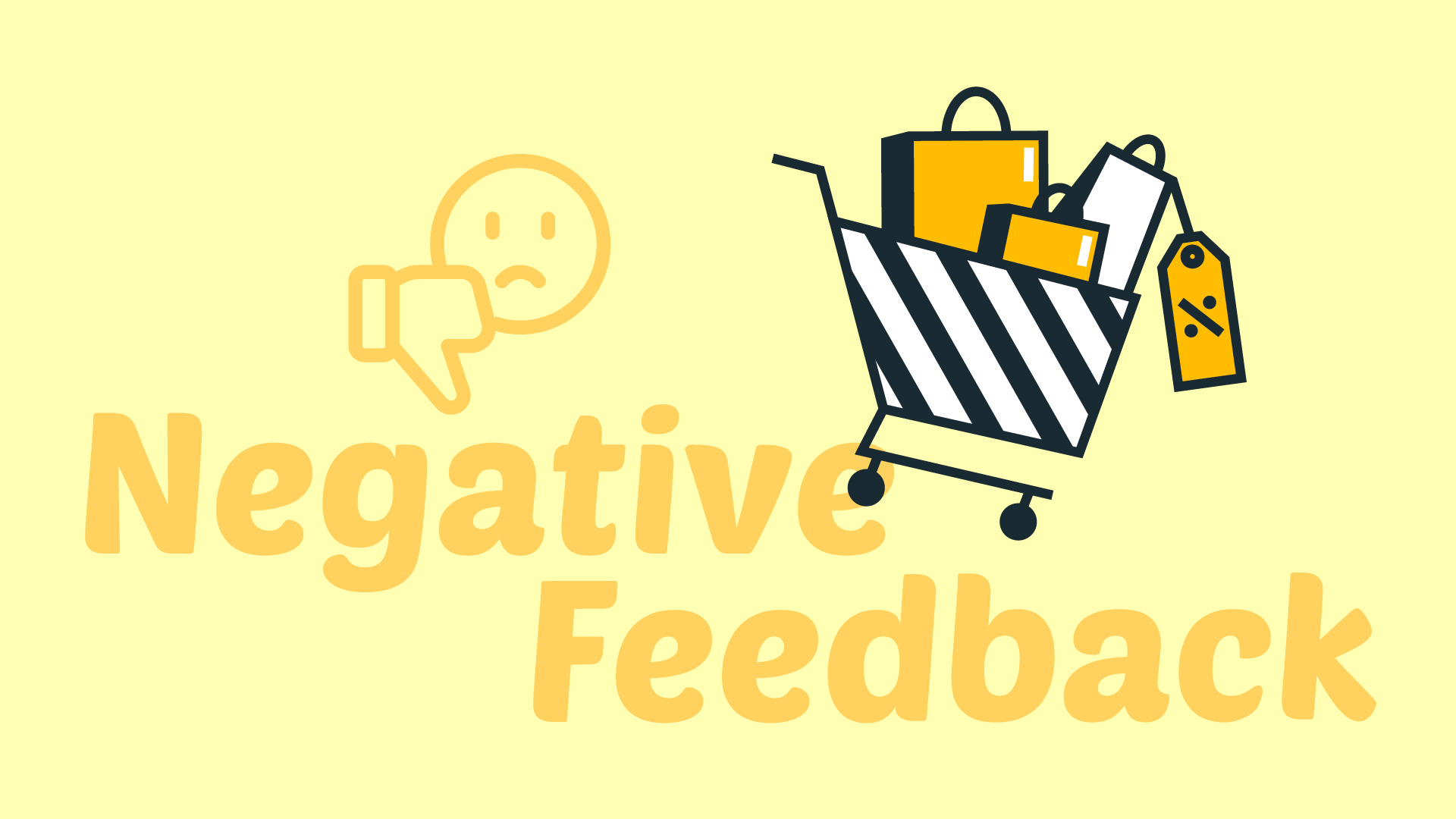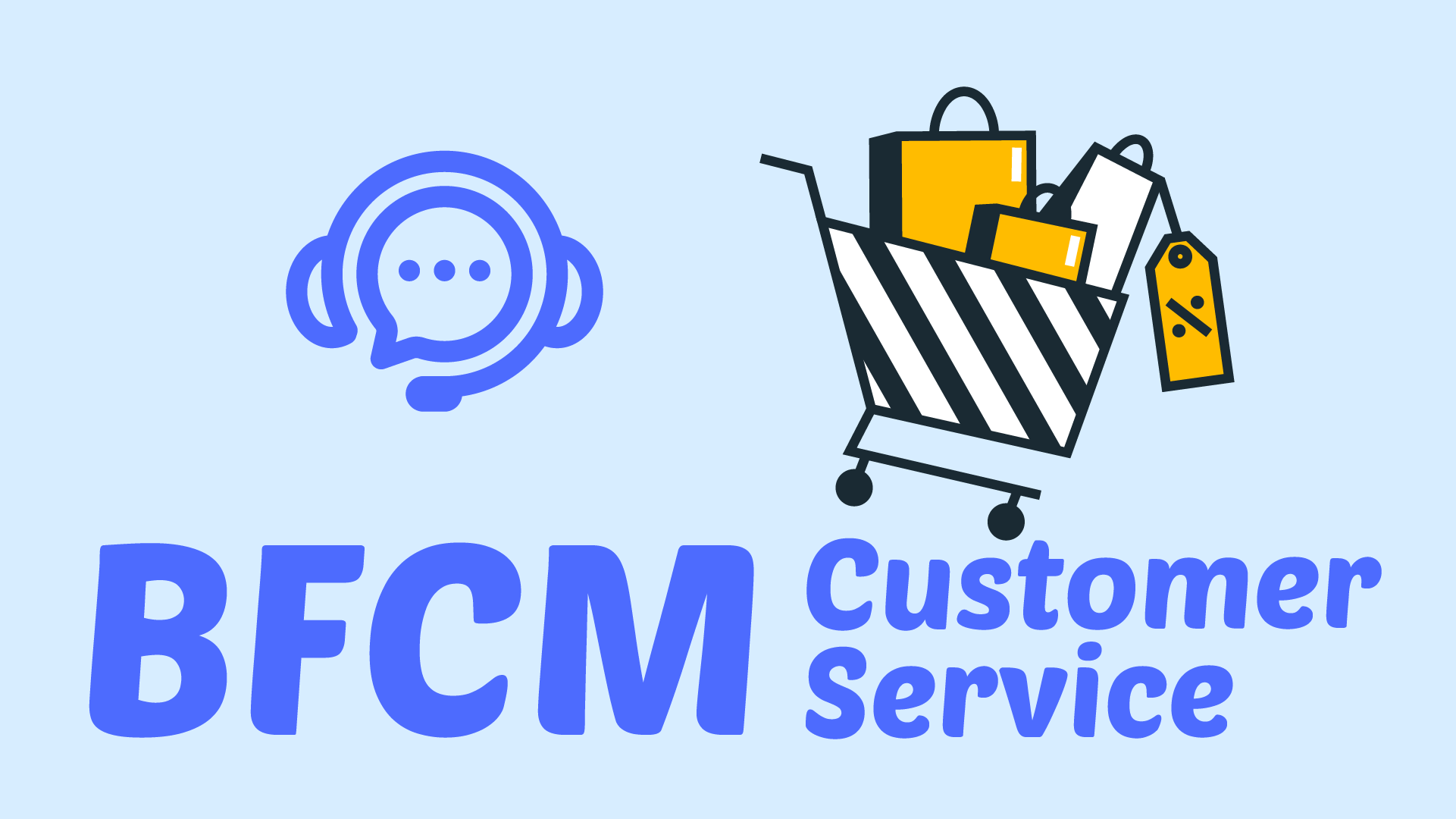
In the ever-evolving world of e-commerce, customer feedback is everywhere, on product pages, social media, Google, and third-party review platforms. And here’s a stat that should make every merchant pay attention: 88% of consumers trust online reviews as much as personal recommendations. Source.
Yet, despite this reality, many e-commerce merchants dread negative reviews. The fear of bad publicity often leads them to hide, ignore, or avoid addressing these critiques. This reaction, while understandable, misses the bigger picture. Negative feedback is not the enemy; it’s an opportunity. When handled correctly, it becomes a catalyst for brand growth, customer loyalty, and operational improvement.
This article will guide you through a crucial mindset shift, from fearing negative feedback to embracing it as a valuable asset. We’ll explore effective strategies for responding to criticism, highlight tools that simplify feedback management, and share real-world examples of brands that turned negative reviews into powerful growth engines.
Understanding Negative Feedback in Ecommerce
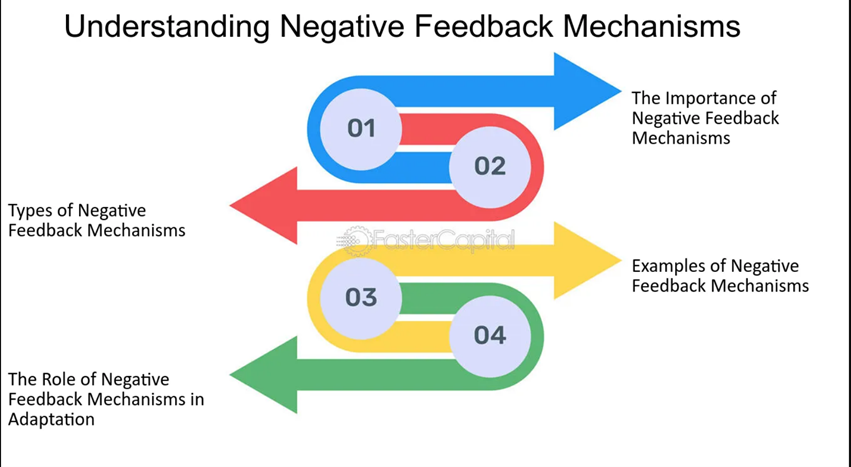
A. What Counts as Negative Feedback?
In the world of e-commerce, negative feedback comes in many forms and from multiple channels. It’s important for merchants to recognize the full spectrum of what constitutes negative feedback to effectively address and learn from it.
Types of Negative Feedback:
- Product Reviews: Customers often leave reviews that highlight product issues such as poor quality, defects, or features that don’t meet expectations. For example, a customer might complain about a product not working as advertised or arriving damaged.
- Customer Service Complaints: These include criticisms about how support teams handle inquiries, delays in response, or perceived rudeness. Customers often express frustration when they feel ignored or left uninformed for order delays or issue resolution. Poor communication or unresolved issues frequently lead to such feedback.
- Misleading Information: Negative feedback can arise when customers feel product descriptions, images, or marketing materials were inaccurate or vague, leading to unmet expectations. This type of feedback highlights the importance of clear, honest communication.
- Technical Difficulties: Issues related to website usability, app glitches, or payment failures fall under this category. Technical problems can frustrate customers and prevent purchases, leading to negative comments on digital platforms.
- Pricing Concerns: Customers may complain about hidden fees, confusing pricing structures, or feeling that the product’s value doesn’t justify its cost. Transparent pricing and clear policies help reduce this type of feedback.
B. Why Merchants Fear Negative Feedback
Despite its inevitability, many merchants view negative feedback with apprehension. This fear stems from several emotional and business-related concerns.
- Emotional Impact: According to the American Psychological Association (2022), 60% of small business owners report feeling stressed by negative reviews. Negative comments can feel personal, triggering anxiety and defensiveness, especially when merchants invest significant time and passion into their businesses. Source
- Fear of Brand Damage and Loss of Sales: Merchants worry that negative feedback will tarnish their brand image and deter potential customers. A series of bad reviews can lower overall ratings, which studies show directly impacts sales and customer trust. For instance, late deliveries, product quality issues, and poor customer service are among the top reasons customers leave one-star reviews, which can significantly harm a brand’s reputation and revenue.
How to Collect and Manage Negative Feedback Effectively?
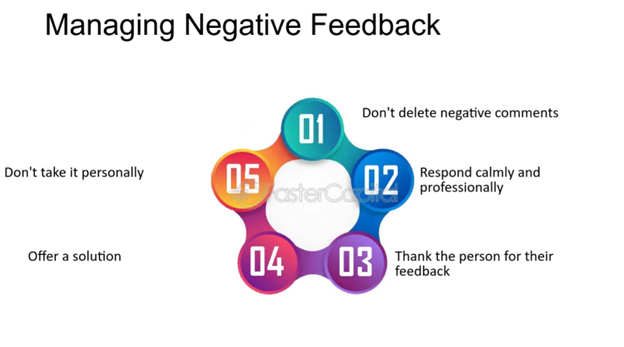
A. Centralizing Feedback Across Channels
In today’s e-commerce landscape, customers share their feedback across numerous platforms,email, chat, social media, WhatsApp, SMS, and public review sites. Managing these scattered inputs can be overwhelming, which is why centralizing feedback through an omnichannel approach is crucial.
The impact of omnichannel customer engagement is significant: companies that use omnichannel strategies see a 91% higher year-over-year customer retention rate, according to the Aberdeen Group. Source. This means that centralizing feedback not only helps you manage complaints better but also directly contributes to keeping customers loyal and boosting long-term sales.
B. Segmenting and Analyzing Feedback
Once feedback is centralized, it’s time to organize and prioritize it. Not all negative feedback is created equal. Some are minor complaints (“box was slightly dented”), while others are high-priority issues (“received the wrong item”, “package never arrived”, “product malfunctioned”). That’s why segmentation matters.
Here’s how to do it effectively:
- Tag by topic: Categorize feedback into areas like shipping, product quality, customer service, return process, etc.
- Flag urgency: Mark messages that require immediate attention, especially if they involve missing items, damaged goods, or upset VIP customers.
- Use AI-powered sentiment analysis: Tools can now scan messages and detect emotion, tone, and urgency levels. This helps identify rising trends before they become serious problems. For example, if you suddenly get a spike in “scratchy fabric” complaints on a new clothing line, you can investigate quickly.
C. Training Your Team for Constructive Responses
How your team responds to negative feedback can make or break customer relationships. Empathy training has been shown to improve customer satisfaction scores by 20% (Forbes, 2023). Source.
Teaching your support staff to listen actively, acknowledge feelings sincerely, and respond thoughtfully helps turn unhappy customers into loyal advocates.
Providing sample response templates for common negative feedback scenarios, such as late deliveries, product defects, or billing issues,can also streamline communication. Templates ensure consistent, professional, and empathetic replies while allowing personalization to address individual concerns.
Turning Negative Feedback into Brand Strength
A. Responding Publicly and Privately
Effectively addressing negative feedback requires knowing when to respond publicly and when to take the conversation offline. Public responses, such as replies on review sites or social media, demonstrate transparency and show potential customers that you take complaints seriously. However, for complex or sensitive issues, moving the discussion to direct messages, email, or phone allows for personalized resolution without airing every detail publicly.
Best practices for tone include maintaining empathy, professionalism, and a solution-oriented approach. Timing is critical, respond promptly to show attentiveness, ideally within 24-48 hours.
Case Study: Domino’s Pizza , From Negative Feedback to Market Leader
Domino’s Pizza offers a textbook example of turning harsh negative feedback into a powerful brand comeback. In the late 2000s, Domino’s faced widespread criticism, with customers describing their pizza as “tasting like cardboard” and “bland”. Instead of hiding from this feedback, Domino’s launched the bold “Pizza Turnaround” campaign, openly acknowledging their flaws and promising real change. Source.
They didn’t stop at words. Domino’s completely overhauled their core product, revamping the crust, sauce, and cheese, and invited customers to test the new recipe. Their marketing was refreshingly transparent, featuring actual negative comments and showing the company’s commitment to improvement. This honesty and action led to a remarkable turnaround: within months, same-store sales jumped 14.3%, and Domino’s regained customer trust and market leadership. Source.
B. Closing the Loop with Customers
Following up after resolving a complaint is essential to reinforce customer satisfaction. Sending follow-up messages confirms that the issue was addressed and shows ongoing care. Encouraging customers to update their reviews or share testimonials after a positive resolution can help rebuild your brand’s online reputation and demonstrate responsiveness to potential buyers.
C. Showcasing Improvements
Announcing product or process changes inspired by customer feedback signals that your brand listens and evolves. Use social proof, such as testimonials, before-and-after comparisons, or case studies, to highlight your responsiveness. This not only reassures existing customers but also attracts new ones who value transparency and continuous improvement.
Common Mistakes to Avoid When Managing Negative Feedback
- Ignoring or Deleting Negative Feedback: One of the biggest mistakes merchants make is ignoring or deleting negative feedback. This damages brand trust and credibility, as customers expect transparency and accountability. In fact, 94% of consumers say a brand’s response to negative reviews influences their purchase decision. Source.
- Responding Defensively or Emotionally: Responding to criticism with defensiveness or emotion escalates customer frustration and harms your brand reputation. Instead, responses should be empathetic, professional, and solution-oriented, focusing on understanding the customer’s perspective and resolving the issue calmly.
- Over-Automating Responses and Losing the Human Touch: While automation can speed up response times, over-reliance on generic, automated replies makes customers feel unheard or undervalued. Personalization is key when addressing negative feedback, tailor your responses to each customer’s unique situation to show genuine care.
- Failing to Act on Recurring Issues: Repeated complaints about the same problems indicate systemic issues. Failing to identify and fix these root causes leads to ongoing dissatisfaction and long-term brand damage. Use feedback data to analyze trends and implement meaningful improvements.
- Delayed Responses to Negative Feedback: Slow replies increase negative sentiment and customer dissatisfaction. Brands that respond within 24 hours can reduce negative sentiment by 40% (Sprout Social). Promptness demonstrates attentiveness and respect for customers’ time.
- Not Closing the Feedback Loop: Leaving customers uncertain whether their issues were resolved damages trust. Always follow up to confirm resolution and invite customers to update their reviews or share testimonials, reinforcing your commitment to their satisfaction.
Practical Tips for Ecommerce Merchants to Leverage Customer Feedback Effectively
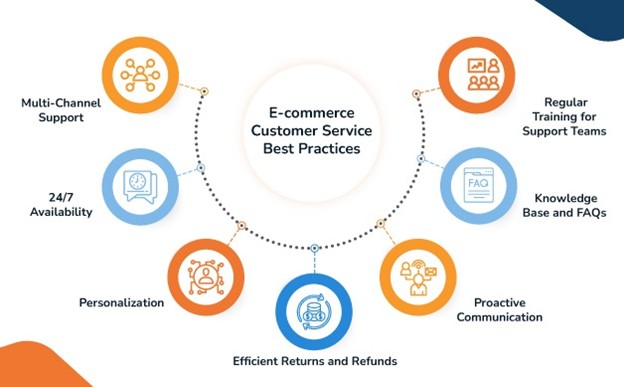
- Prioritize Negative Feedback Based on Severity and Urgency: Not all negative feedback requires the same level of attention. Develop a system to categorize complaints by their impact on customer satisfaction and business operations. For example, safety issues or product defects should be addressed immediately, while minor usability complaints can be scheduled for longer-term improvements. Prioritization ensures critical problems are resolved quickly, preventing escalation and protecting your brand reputation.
- Respond to All Feedback, Positive, Neutral, and Negative: Engaging with all types of feedback builds trust and shows customers you value their opinions. Responding to positive reviews reinforces loyalty, while addressing neutral and negative feedback demonstrates commitment to improvement.
- Centralize and Organize Feedback for Easy Analysis: Collecting feedback from multiple channels can be overwhelming. Centralizing all inputs into one platform streamlines management, improves efficiency, and enables smarter decision-making.
- Set Clear Goals and KPIs for Feedback Management: Define measurable objectives such as improving Customer Satisfaction Score (CSAT), increasing Net Promoter Score (NPS), or reducing First Contact Resolution (FCR) time. For example, aiming for a CSAT above 85% or resolving 70% of queries on the first contact can guide your team’s performance.
- Train Your Customer Support Team Thoroughly: Equip your team with the skills to handle feedback empathetically and professionally. Training should focus on active listening, conflict resolution, and personalized communication. Incorporate real-world examples and role-playing exercises to prepare staff for common scenarios. Well-trained teams can turn negative experiences into positive ones, boosting customer satisfaction and loyalty.
- Monitor Customer Behavior Alongside Feedback: Combine feedback data with customer behavior analytics to gain deeper insights. For example, tracking cart abandonment reasons alongside customer complaints can reveal pain points in the checkout process. This integrated approach helps prioritize improvements that directly impact sales and satisfaction.
- Leverage Automation Without Losing Personalization: Automation tools can speed up feedback collection and response processes but should not replace the human touch. Use automation for initial acknowledgments and data organization, but personalize replies to address individual concerns sincerely. This balance ensures efficiency while maintaining customer trust and connection.
Apple: Turning Public Criticism Into Trust and Improvement
Apple provides a strong example of how brands can use customer feedback to fuel product development and restore trust. The company actively collects feedback through multiple channels, including social media, support interactions, and customer surveys. When facing public criticism, such as during the battery slowdown controversy, Apple responded transparently by acknowledging the issue, issuing an apology, and offering discounted battery replacements. This approach not only resolved the immediate concern but also strengthened long-term customer loyalty. Apple’s ability to act on feedback and communicate changes effectively exemplifies how merchants can close the loop in a way that builds credibility and retention.
Leveraging Technology to Streamline Feedback Management Through Sobot

A. Facilitating Direct Customer Communication Across Multiple Channels
Sobot empowers e-commerce merchants by providing a unified platform that supports multiple communication channels such as chat, email, phone calls, WhatsApp, and other messaging apps. This omnichannel capability allows customers to express dissatisfaction directly and privately, reducing the likelihood that negative feedback will be posted publicly on social media or forums where it can cause greater reputational harm. Source.
B. AI-Powered Emotional Recognition to Identify Negative Sentiment Early
A standout feature of Sobot is its AI Copilot and chatbot equipped with emotional recognition technology. These AI tools analyze customer interactions in real time, detecting signs of frustration, dissatisfaction, or other negative emotions. By recognizing these emotional cues early, Sobot enables businesses to take timely actions such as escalating the conversation to a human agent or offering proactive support. Source.
C. Proactive Customer Outreach to Calm and Retain Customers
Sobot supports proactive engagement by allowing merchants to reach out to customers via WhatsApp, SMS, phone calls, and other channels before complaints escalate. This proactive outreach can include clarifications, assistance, or compensation offers to soothe dissatisfied customers. By contacting customers early and offering timely support, businesses can ease tensions, build goodwill, and significantly reduce the chances of negative feedback being posted publicly
D. Data-Driven Insights to Uncover Root Causes of Negative Feedback
Sobot’s intelligent quality inspection and analytics tools provide merchants with deep insights into customer interactions and recurring pain points. Sobot tracks key metrics such as response times, resolution rates, sentiment trends, FCR, CSAT, NPS and more, enabling real-time monitoring and targeted improvements to optimize resource allocation and service quality. These actionable insights empower continuous improvements in products, services, and support processes, helping reduce future complaints and enhance overall customer satisfaction. Source.
Conclusion
In conclusion, negative feedback is not a setback but a valuable asset for e-commerce brands. It offers critical insights that drive product improvements, enhance customer experiences, and build lasting loyalty. Rather than fearing criticism, merchants should embrace it as a catalyst for growth and continuous improvement.
To effectively harness the power of negative feedback, leveraging advanced tools like Sobot is essential. Sobot’s omnichannel communication, AI-powered emotional recognition, and data-driven analytics empower merchants to manage feedback efficiently, respond empathetically, and make informed decisions. By integrating such solutions into your customer support strategy, you can build a resilient, trusted brand that thrives on transparency and customer-centricity.

